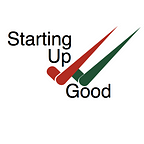What to Read This Week: Prioritizing the Global Goals
New reports tell us which of the SDGs impact investors are most drawn to. But how does that line up with the sequencing experts recommend?
Investors, businesses, and nonprofits continue to embrace the 17 Sustainable Development Goals (SDGs or Global Goals) adopted by the United Nations in 2015. Examples include aligning corporate citizenship strategy to the SDGs, investigating the role of the private sector in National Reporting, and increasing public-private partnerships to achieve the Global Goals. These activities increase the visibility of the Goals through reporting and comparing, and provide resources for entrepreneurs and investors to get involved.
One critique of the SDGs is the sheer volume of the 2030 Agenda: 17 Goals, 169 targets, and 232 unique indicators. Achievement must take place in multiple steps at multiple levels. Impact Investors have already begun to align their investments with select SDGs. A new report from InvestorFlow, highlighted by Impact Alpha, looks at which SDGs its selection of members are focusing on.
The report investigated 205 of InvestorFlow’s impact investing members, which include Adobe Capital, Global Partnerships, Toniic network, and even the Bill & Melinda Gates Foundation. The report analyzed their current investments and aligned them with individual SDGs, as well as compared these preferences to another survey that was released earlier this year, the GIIN’s 2017 Impact Investor Survey.
According to the InvestorFlow Report, impact investors focus the most on:
- Goal 3 (Good Health)
- Goal 7 (Affordable Energy)
- Goal 1 (No Poverty)
- Goal 6 (Clean Water)
The Goals that have received the least amount of investment include:
- Goal 17 (Partnerships)
- Goal 16 (Peace, Justice, and Strong Institutions)
- Goal 14 (Life Below Water)
- Goal 15 (Life on Land)
The GIIN survey captured similar trends. The Goals that were most commonly invested in were:
- Goal 8 (Decent Work and Economic Growth)
- Goal 7 (Affordable Energy)
- Goal 1 (No Poverty)
- Goal 5 (Gender Equality)
Goals receiving less investment interest included:
- Goal 16 (Peace, Justice, and Strong Institutions)
- Goal 14 (Life Below Water)
- Goal 15 (Life on Land)
- Goal 17 (Partnerships)
Clearly, impact investors are drawn to the human element of the Global Goals, and to investments that deliver energy, clean water, and economic growth to the vulnerable. Goals that are more focused on conservation and policy are less likely to receive investment.
But how do these trends align with the step-by-step achievement of all the SDGs?
Earlier this year, SDGs In Order — an initiative of the OECD, Bretton Woods, and Greenhouse (an organization dedicated to social innovation) — attempted to sequence the Global Goals into an achievable order. Using survey data from 85 experts and sustainable development professionals, SDGs in Order laid out the “best, most logical sequence” for achieving the SDGs in the 15-year time-frame given.
To be clear, this survey isn’t implying that some Global Goals are more important than others. It’s simply attempting to establish the best order for achieving the 2030 Agenda, understanding that efforts will be “ much more effective if directed in the most logical sequence: Step 1 facilitates Step 2; Step 2 facilitates Step 3; etc.”
While many of the findings from this survey overlap with findings from the InvestorFlow and GIIN impact investor surveys, there are some stark differences. SDGs In Order found that experts place the highest priority on goals related to establishing good governance and human rights, and placed lower priority on environmental targets. The highest priority Goals include:
- Goal 10 (Reduce Inequalities)
- Goal 1 (No Poverty)
- Goal 5 (Gender Equality)
- Goal 16 (Peace, Justice, and Strong Institutions)
Goals receiving the lowest priority included:
- Goal 2 (Zero Hunger)
- Goal 15 (Life on Land)
- Goal 11 (Sustainable Cities)
- Goal 14 (Life Below Water)
This article from OECD dives even further into the research, sequencing the individual targets that were seen as the highest priority to accomplish first, and analyzing the results.
It is refreshing to see development experts and impact investors alike assign priority to ending poverty, providing affordable energy, and working for equality and human rights for all. However, the largest discrepancy between the findings of the InvestorFlow survey and SDGs In Order is the priority of Goal 16 (Peace, Justice, and Strong Institutions). ‘Promote the Rule of Law and Access to Justice’ was the highest priority target according to SDGs in Order findings, yet Goal 16 ranked among the lowest priorities according to both the GIIN and InvestorFlow impact investor surveys.
We are speculative as to the reason for this discrepancy. Could there be a limited number of investment opportunities in providing access to justice? Is this area too entrenched in government policy to be applicable to private sector investment? Or is the technology and innovation found in water and energy projects simply more attractive to impact investors than the complexities of Goal 16?
Whatever the reasons, we hope investors and organizations that have embedded Global Goal achievement into their long-term strategies will consider the sequencing priorities recommended by sustainable development experts. After all, everyone benefits when the SDGs are pursued as quickly, efficiently and effectively as possible.
We look forward to following along as the Global Goals continue to grow in popularity and become a universal framework for investing.
